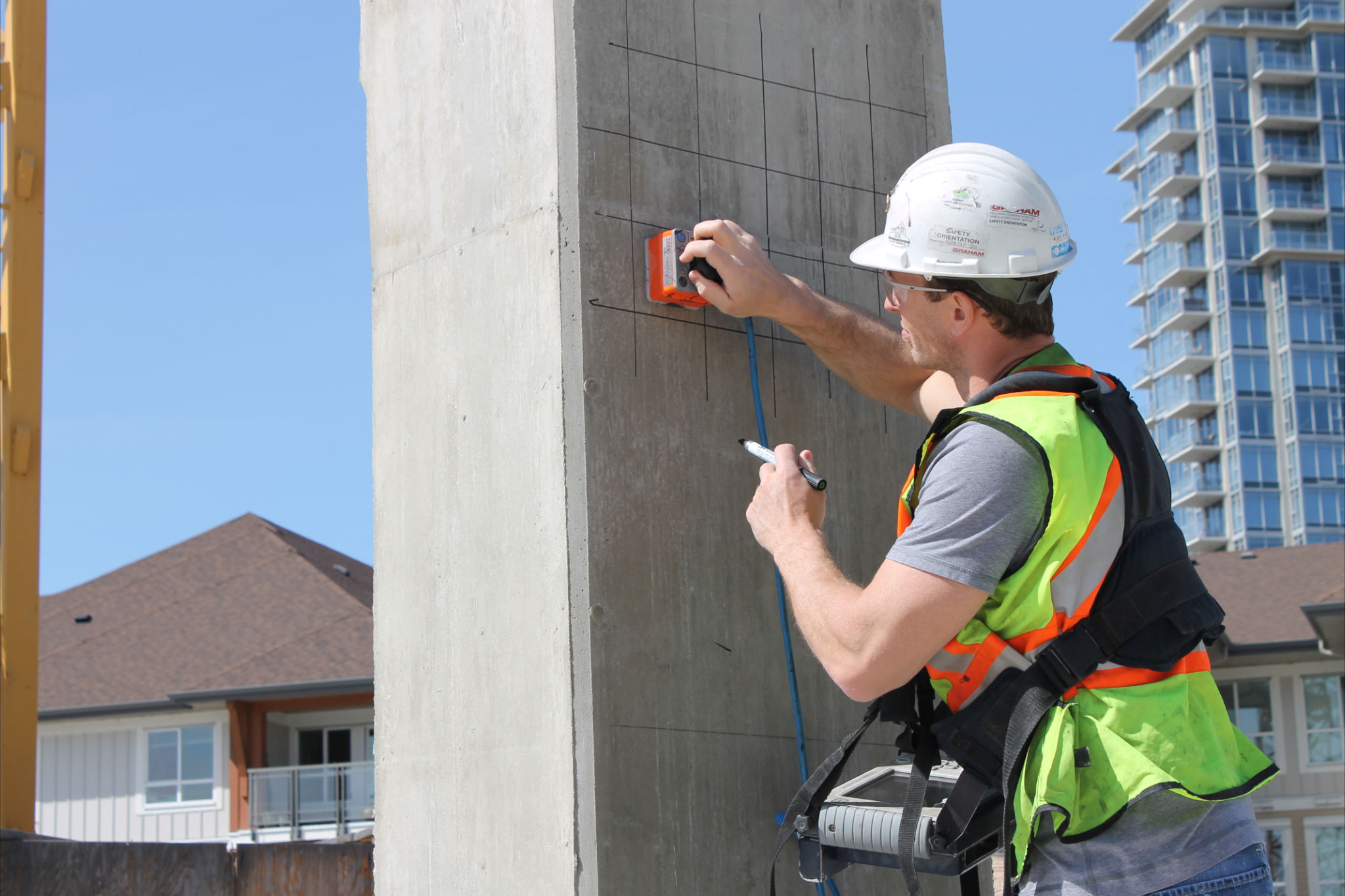Past the Surface Area: Leveraging Advanced Concrete Scanning Techniques for Unmatched Precision and Insight
Advanced concrete scanning methods have arised as important devices in this quest, supplying a glance beneath the surface area to reveal a globe of vital insights. By using advanced modern technologies, experts can uncover anomalies, assess the problem of concrete structures, and make notified choices that shape the training course of jobs.
Relevance of Advanced Concrete Scanning
The relevance of utilizing sophisticated concrete scanning strategies lies in the unparalleled precision they supply for discovering sub-surface abnormalities and guaranteeing architectural stability. By utilizing innovative technologies such as ground-penetrating radar (GPR), electro-magnetic induction, and progressed sonar imaging, building specialists can dig underneath the surface area of concrete structures with a degree of precision that far exceeds typical inspection techniques. Concrete Scanning. These strategies enable the identification of concealed threats like rebar corrosion, spaces, channels, or post-tension wires that could jeopardize the security and safety and security of a framework over time
Additionally, progressed concrete scanning gives invaluable insights into the total condition of a concrete aspect without the requirement for intrusive actions, minimizing the risk of triggering damage during the evaluation procedure. The capability to determine the specific area and deepness of possible concerns allows for targeted repairs and maintenance, ultimately prolonging the lifespan of the structure and optimizing its performance. Essentially, the significance of advanced concrete scanning can not be overstated in the realm of construction and infrastructure maintenance, where precision and integrity are extremely important.
Kinds of Cutting-Edge Technologies

Anomalies and Issue Detection

In addition to GPR, concrete scanning techniques like thermography and impact-echo testing are likewise effective in finding abnormalities and defects. Thermography uses infrared innovation to recognize variants in surface temperature level, indicating potential areas of concern such as delamination or moisture ingress. On the other hand, impact-echo testing involves analyzing acoustic responses to spot spaces, fractures, and other problems within the concrete. By leveraging these advanced techniques, professionals can proactively address structural concerns, ensuring the long life and safety and security of concrete frameworks.
Assessing Concrete Condition
Just how can engineers properly assess the problem of concrete frameworks to ensure their durability and safety? Different innovative concrete scanning techniques are employed for this purpose. Ground-penetrating radar (GPR) is commonly used to assess the interior framework of concrete, spotting gaps, cracks, and other abnormalities that might jeopardize its stamina.
Combining non-destructive testing more techniques with visual assessments enables for a detailed examination of concrete problem, making it possible for designers to recognize prospective problems early on and carry out prompt maintenance or repair services. By leveraging these sophisticated methods, engineers can guarantee the long-term resilience and safety of concrete structures.
Enhancing Decision-Making Processes
In the world of framework administration, enhancing decision-making processes is vital for ensuring the reliable maintenance and durability of concrete structures. Enhanced decision-making processes in concrete administration include making use of innovative scanning methods to gather comprehensive data on the problem of visit this website frameworks. By leveraging innovations such as ground-penetrating radar and 3D imaging, stakeholders can make informed choices relating to substitute, repair work, or support methods.
These advanced scanning strategies offer important understandings into the internal structure of concrete, identifying possible issues such as gaps, fractures, or corrosion that might not show up on the surface area. This level of thorough info permits for positive upkeep planning, decreasing the danger of architectural failures and raising the general life-span of concrete structures.
Additionally, by incorporating digital documents and analysis devices into the decision-making process, stakeholders can track the advancement of concrete problems in time, allowing anticipating maintenance methods and optimizing resource appropriation. Ultimately, the assimilation of advanced concrete scanning methods boosts decision-making processes by offering unparalleled accuracy, insight, and effectiveness in infrastructure monitoring.
Verdict
Finally, progressed concrete scanning strategies offer unequaled precision and understanding in spotting anomalies, problems, and evaluating the condition of concrete frameworks. By leveraging advanced modern technologies, decision-making procedures can be enhanced, causing even more informed and efficient options for keeping and fixing concrete framework. These techniques play an essential function in making sure the safety and security and longevity of concrete frameworks, making them an important tool in the area of construction and engineering.
Moreover, progressed concrete scanning provides invaluable insights right into that site the overall condition of a concrete element without the demand for intrusive actions, decreasing the threat of creating damages throughout the evaluation process - Concrete Scanning. One more innovative technology is 3D X-ray scanning, which provides detailed images of the inner framework of concrete, using valuable information without the need for destructive screening. In Addition, Concrete Cover Meters are utilized to determine the density of concrete cover over reinforcement bars precisely. Enhanced decision-making procedures in concrete monitoring include using advanced scanning strategies to collect in-depth data on the condition of frameworks.In final thought, advanced concrete scanning strategies supply unequaled accuracy and insight in identifying abnormalities, problems, and assessing the problem of concrete frameworks
Comments on “Extensive Insights into Concrete Scanning Procedures”